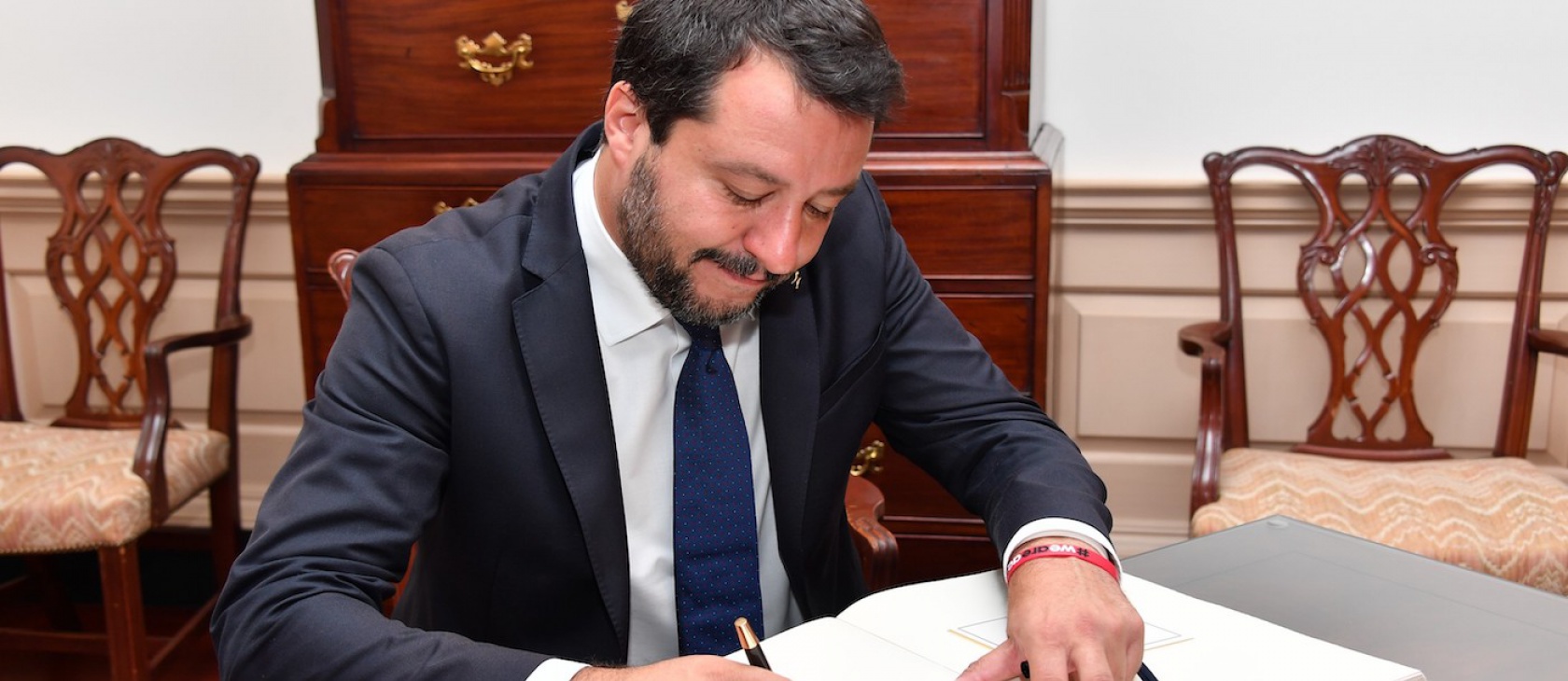Italy’s populist coalition government has plunged itself into a crisis, even as it has enjoyed its status as one of the most popular governments in recent history. How can this paradox be explained? With apologies to Bill Clinton, “It’s not the economy, stupid!” This crisis is apparently all about politics – and the Roman Catholic Church has popularized the fractured coalition government’s interventionist economic policies.
For the second quarter of 2019, Italy’s economy once again had a zero-percent growth rate. The government praised the lowest unemployment rate since 2012 and perhaps the highest labor force participation rate since 1977, when Italy first began to record this statistic. But those data are grossly inflated:The unemployment rate is still at 9.7 percent, the third-highest in European Union. This year’s unemployment level is lower than last year’s mainly because fewer people are considered officially “unemployed”; however, many of them are very young (from 15 to 24 years old) and/or jobless who are not searching for a job any more.
The actual employment rate is increasing only for older workers (those older than 50). The largest number of new jobs are in government-run initiatives. Just last week, the government announced the recruitment of 53,000 new public school teachers. These data, combined with a zero-growth economy, paint a picture of economic stagnation rather than resurgence.
The Italian Church, while officially neutral and apolitical, vocally opposes League policy, particularly on immigration. But it offers no opposition to its interventionist economic schemes.
But the economic stagnation is not the main cause of the government’s crisis. Its two leading parties, the League and the Five Star Movement, couldn’t differ more on issues regarding foreign policy, culture wars, immigration, and sustainability. This last topic widened the split. The Five Star Movement, inspired by the economic theories of Serge Latouche and the “degrowth” movement, opposed virtually every new infrastructure project. It supports the international campaign against the Tav, the high-speed rail project that would link Lyon in France to Turin (Torino) in Italy. They were first in line opposing drilling in the Adriatic Sea, the Trans Adriatic Pipeline (Tap) in the Puglia region; they wanted to close Ilva’s steel factory in Taranto because of its pollution. During the last year of government, out of its need to keep the coalition together, party leaders had to accept drilling, Tap, and Ilva, annoying and disappointing millions of party supporters. They opposed Tav, one of their founding issues, but lost the last parliamentary vote on the matter.
These contradictions finally exploded. We still don’t know if this split will be definitive or not, if Italy will have snap elections next autumn or a new government. In any case, we know that the “populist” honeymoon is over. The question is: How was the marriage possible until now?
The answer is socialism. While Five Star Movement favors degrowth and the League supports massive infrastructure projects, both adhere to a statist economic system. In this government, both parties introduced more public spending. The League altered the pension system, which is the largest part of our budget. At 15.4 percent of GDP, it is twice the OECD average of 7.5 percent and the second highest in the world. Unfortunately, they did not reform it; they actually expanded it, lowering the retirement age.
The Five Star Movement, in the meantime, introduced its Universal Basic Income, which disappointed many potential recipients. Since it was too low for many to live on and only available if the beneficiary is searching for a job, it cost less than predicted, but it still required new expenditures of €7.1 billion in public money.
Both parties agreed on the nationalization of Alitalia air company, in order to save it from bankruptcy – but both parties agree, in principle, on nationalizations.
They both agree on the (now-aborted) program of “mini-bonds”: zero-interest, expandable state bonds that could be used to pay millions of state’s creditors. While the promoters of that project denied it was a new currency, they basically tried to introduce a new, parallel currency alongside the Euro. That means only one thing: higher inflation.
The League wanted to introduce a new 15 percent rate flat tax, even in the face of more public spending. But after many corrections, the flat tax became a two-rate progressive tax: Families making more than €55,000 would have to pay the 38 percent rate. Now, it may be aborted altogether because of the government’s political crisis.
In order to understand this economic policy, we have to comprehend the Italian government’s guiding economic principle: Put money into consumers’ pockets, and they will spend more. Public and private spending is considered the real engine of economic growth. This is hardcore Keynesianism, a view promoted actively by economists supporting both Five Star Movement and the League. Inspired by neo-Keynesians, or even supporters of Modern Monetary Theory (MMT), they usually consider the State, not only the promoter, but also the creator of wealth: It could print money and pay off all debts using inflation, taxation, and public spending to regulate total economic growth.
If both coalition partners see the State as an all-powerful sovereign, the “markets” are the bad guys on par with Soviet era “saboteurs.” Markets are anthropomorphized and blamed for all shortcomings: In the government’s rhetoric, “markets fear Italy,” “markets want to bully Italy,” as if there were a few powerful people in a single room commanding the world’s economy. Government coalition forces can’t conceive of the market as a spontaneous order.
What’s next for Italy? It’s difficult to imagine a true alternative. A new left-wing government could not ignore the sheer numbers of the Five Star Movement. A new right-wing government could not be other than supportive of the League’s agenda, which made it the single largest party in Italy in the last EU elections and all recent polls.
And what about the Church? In this decade the Italian Church, while officially neutral and apolitical, vocally opposes League policy, particularly on immigration. But it offers no opposition to its interventionist economic schemes. Both the cultural institutions of the Italian Church and the League promote a similar Keynesian agenda. One of the most influential economists in the Vatican today is Joseph Stiglitz, who is also one of the League’s favorites. That’s why most Catholics agree with Pope Francis and with the League on economics.
And that’s why Matteo Salvini may be poised to take power in Italy.




